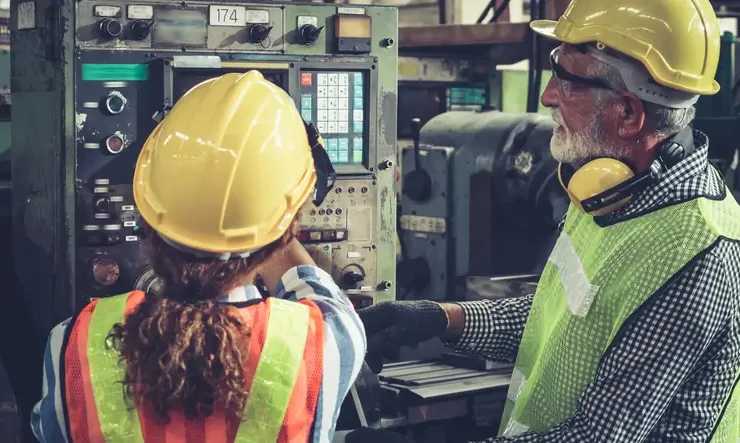Who is Responsible for Creating a Safe and Healthy Workplace?
In any workplace, ensuring the health and safety of employees is a critical concern. The responsibility for creating a safe and healthy workplace is a collective effort involving various stakeholders, including employers, employees, and government agencies. This article will delve into the roles and responsibilities of each group to establish a comprehensive understanding of how to maintain a safe and healthy work environment.
If you are wondering who is responsible for health and safety on site, remember that workplace safety does not only depend on the person. Everyone needs to play a pivotal role and understand their responsibilities to implement safety. Whether you are an employee or employer, you must be aware of duties that are obligated by federal agencies to promote a safe and healthy workplace.
Employees Responsibilities for Health and Safety
While employers have substantial health and safety responsibilities, they also have an important role in maintaining a well-being workplace. Here are some key aspects of employees’ responsibilities:
1. Compliance
Employees are required to follow health and safety policies and procedures put in place by their employers. They must comply with safety guidelines, procedures, and regulations set by their employer. However, these things may include the proper use of PPE, adhering to safe work practices, and following emergency protocols.
2. Reporting Hazards
Employees should cooperate with management and coworkers to create a safe working environment. This includes addressing safety concerns and offering suggestions for improvements. They must promptly report any hazards, unsafe conditions, or incidents to their supervisor or safety officer. Bear in mind that early reporting helps in addressing issues before they escalate.
3. Training & Awareness
Employees should actively participate in safety training and awareness programs. Understanding potential risks and safety measures is essential for their well-being and that of their colleagues. Providing OSHA safety training is highly imperative. These health and safety training sessions will keep them capable of knowing the significant tips and tricks to mitigate possible hazards.
4. Proper Equipment
Employees must use safety equipment and gear as required by their jobs and the workplace. This includes wearing personal protective equipment (PPE) when necessary. Furthermore, it’s the responsibility of employees to make sure that they use provided safety equipment and tools correctly. They should not bypass safety measures for convenience or speed.
5. Workplace Housekeeping
Maintaining a clean and organized workspace is important for safety. Employees should keep their work areas tidy to prevent accidents caused by clutter or obstructions. Moreover, they should avoid engaging in reckless or dangerous behavior, including the use of drugs or alcohol that impairs their ability to work safely.
6. Self-Care
Employees should take care of their physical and mental health, as this contributes to overall workplace safety. Staying well-rested, managing stress, and seeking help when needed are all important. Employers need to maintain good communication with their employees, so they can address environmental factors like air quality and noise levels, which can impact their health. Employers should monitor and address these issues as needed.
Employer’s Responsibility to Maintain Health and Safety
Employers play a pivotal role in the health and safety of a workplace. This must be their first priority to ensure that their workers and place of work are free from severe hazardous effects that lead to injuries and casualties. They are legally obliged by the Occupational Safety and Health Administration (OSHA) to minimize the risks and protect the well-being of their employees. However, there are some responsibilities of employers that should be considered. Let’s have a look!
1. Legal Obligations
The most significant factor that falls on employer’s shoulders is the legal obligations that are provided by federal agencies in order to promote safety, health, and the workplace environment for workers. However, these responsibilities and regulations are set by jurisdiction, such as the implementation of safety regulations, conducting risk assessment regularly, and ensuring compliance with local laws and regulations. Once employers are aware of these legal requirements and work diligently, that will aid in promoting a safe and healthy workplace.
2. Risk Assessment
It is the employer’s responsibility to regularly perform inspections of the workplace and machinery to identify potential hazards and risks in the workplace. However, regular inspections help in understanding and managing risks that are associated with the work environment. A comprehensive risk assessment plays a significant role in the basis for creating a safe workplace.
3. Safe Work Practices
Employers must have to establish and enforce safe work practices and procedures. This may involve developing and communicating safety guidelines, providing proper safety training and resources to employees, and promoting a culture of safety in the workplace.
4. Provision of Protective Equipment
Employers are responsible for providing necessary personal protective equipment (PPE) and ensuring that employees use it as required. This can include items like helmets, gloves, safety goggles, and more, depending on the nature of the work.
5. Emergency Preparedness
Employers should develop and communicate emergency procedures, such as fire evacuation plans, first-aid protocols, and contact information for medical assistance. Regular drills and training can help ensure employees know what to do in case of emergencies.
6. Health and Wellness Programs
Employers can promote health and wellness in the workplace by offering programs that encourage healthy lifestyles, stress management, and mental health support. A healthy workforce is more productive and less prone to accidents.
7. Establish a Process of Reporting and Investigation
Employers must establish a process for reporting accidents, near misses, and safety concerns. They should investigate these incidents to identify root causes and take corrective actions to prevent similar incidents in the future.
8. Compliance with Industry Standards
Employers should stay informed about industry-specific safety standards and ensure that their workplace complies with them. This may involve adopting best practices and guidelines relevant to their field.
Responsibilities of Government Agencies and Regulations
In many countries, government agencies are also responsible for setting and enforcing health and safety regulations. Employers and employees are legally bound to comply with these regulations, which vary by location and industry. Government agencies also conduct inspections to ensure compliance and may levy fines for violations.
Suppose you are in the United States, you must consider the safety regulations according to different states such as New York, California, Pennsylvania, etc. Moreover, you also need to contemplate the OSHA safety guidelines to ensure the safety and health of different workplaces. The thing is each industry has been specified with different guidelines that are mentioned below;
1. Construction Industry
In construction, employees are responsible for using scaffolding and fall protection, working with heavy machinery safely, and ensuring that electrical equipment is properly grounded.
2. Chemical and Manufacturing Industries
Workers in these sectors must follow protocols for handling hazardous substances, use personal protective equipment (PPE) like respirators and chemical-resistant clothing, and participate in safety drills.
3. Healthcare Sector
Healthcare professionals are responsible for infection control, safe medication administration, patient handling techniques, and maintaining patient confidentiality.
4. Office Environments
While offices may seem low-risk, employees should still be mindful of ergonomics, fire safety, and basic first aid knowledge.
Conclusion
Creating a safe and healthy workplace is a shared responsibility between employers and employees. Employers are legally obligated to provide a safe environment, conduct risk assessments, and enforce safety measures. On the other hand, employees have a duty to follow safety guidelines, report hazards, and actively participate in safety programs.
In many ways, both have the responsibility to pursue trainings like OSHA 10-hour construction and OSHA 30-hour construction courses. When both parties fulfill their responsibilities, it leads to a workplace where everyone can work with confidence, knowing that their health and well-being are a top priority.





